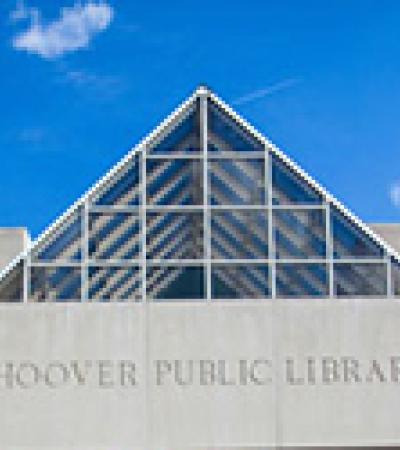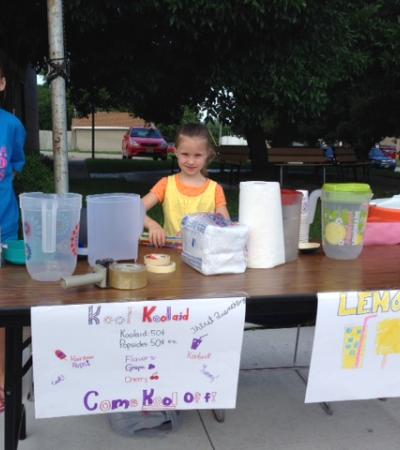Startup Sharp with the Augusta Library is a four-part webinar series that teaches people how to market their own small business from home.
Startup Sharp premiered at 5:30 p.m. on Mondays from July 20 to August 10. For each webinar, we had a host providing information through PowerPoint slides and speaking with guests; a second person who handled the comment sections with questions; and a third who monitored the livestream from multiple platforms.
The webinars were presented via livestream through YouTube, Facebook and Twitter.
Advanced Planning
Our goals for this program were to provide a free service to the community that gave expert advice and resources to patrons affected by the COVID-19 pandemic. Many have lost their source of income and are forced to stay at home during this time.
It took us a month to plan and prepare this series. We wanted Startup Sharp to reach multiple audiences so we planned to purchase a streaming service that would help us go live on Facebook, Twitter and YouTube. Next, we searched for guests to come on the show and give advice to those looking to start a small business from home. We ended up connecting with three professors from the James M. Hull College of Business at Augusta University and a marketing and communications specialist from the Georgia Cancer Center.
Next, we focused on marketing and publicity. We created a flier for the event and spread the word by sending out a press release, boosting social media posts, email marketing and word-of-mouth marketing. To prepare for the show, we created a script and an outline for our guests so they would be prepared for a Q&A discussion towards the end of our show. We invited people to ask questions in the comment boxes. We also prepped our guests with backup questions in case there were no comments. When preparing for each episode, we tested the livestream an hour before the official program to troubleshoot technical problems.
Our unexpected challenges came during the livestream in the form of blackout slides and no audio. The streaming service help line wasn’t really enough to help us solve these problems. Technology isn’t always on our side, and sometimes it has a mind of its own. No matter the obstacle, we always found a way to work through to the end of the show. Our outcomes were for patrons to leave with a basic understanding of formulating a business plan, financing a business, and building their business brand.
Marketing
Since our program was going to be a series of four episodes we pushed our social media posts and email marketing advertisements one week before the first show.
Our email marketing reached 130 subscribers while our social media promotions for Facebook and Twitter reached 5,235 people with 119 likes.
Budgeting
You will need social media advertising, computers, a streaming service and a web camera with a microphone. In terms of cost-cutting, we suggest starting off with collecting the things you already have access to. If you have laptops or web-conferencing software (Google Meets, WebEx, Zoom, etc.) use these.
Day-of-event Activity
Our setup consisted of three computers and one web cam. Our library needed four staff members to make our show work. This show could work with two people (a host and a social media monitor).
We had one staff hosting the web series, two monitoring the comment sections of social media, and one systems administrator on the side if any technical problems occurred. Before showtime, we made sure to have guests call in an hour ahead of time to make sure they were able to get connected to our livestream.
Program Execution
Startup Sharp had a learning curve for the staff that participated, but ultimately, this program gave back to the members of our community in an informative and beneficial way. Patrons gained free advice from business professionals and college professors that most have to enroll in school for.
Even with the technological bumps we came across, we were able to accomplish what we set out to do. We were also able to leave an archive on YouTube for on-demand viewing by people searching for this type of information. All four shows brought in a total of 370 participants from Facebook, 130 participants from Twitter, and 128 participants from YouTube.
Our library established a new relationship with the James M. Hull College of Business at Augusta University and the Georgia Cancer Center. We’ve talked about future programming for the show and working on covering financial literacy and why it's important in our community.
The experience on this show gave us the confidence to do more live virtual events on other topics. We used Project Outcome surveys for this series. Because this was a virtual program, it was difficult to get responses from posts on our platforms. The feedback we did get was positive.
Advice
Technology isn’t always on our side, so be patient. We are all trying to get used to this new reality during the pandemic.
Make sure you have a back-up plan if things don’t go the way you intended. Have an IT person available when doing your show. It also may be a good idea to have your guest present in the building to avoid any firewall issues and troubleshooting their personal technological setup.


